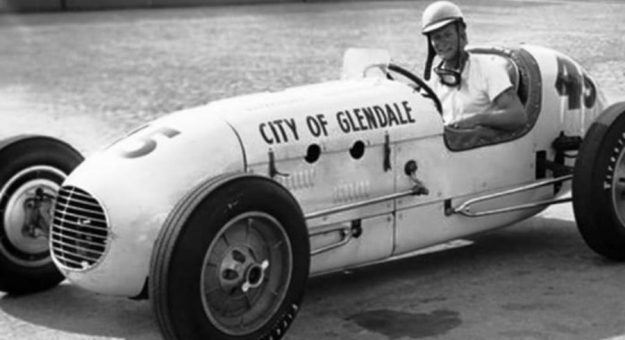A.J. Watson’s Indianapolis cars are iconic pieces of racing machinery.
Acclaimed as works of art, they possess a classic beauty in form and function that remains fresh seven decades after Watson built his first one.
The cars won the Indianapolis 500 seven times, and the very name, “Watson Roadster,” defines a golden era of Indianapolis racing.
The car that launched Watson’s remarkable career, however, was a more humble undertaking. Watson claimed Dick Rathmann, who drove Watson’s track roadster in Chicago with Andy Granatelli’s Hurricane Ass’n, was responsible.
“Rathmann and a few other hot rodders were sitting around in my Glendale shop,” recalled Watson with a chuckle, “and Rathmann kept needling us about building a car for the 1950 500. He’d say, ‘You guys think you’re such hot-shot car builders, put together something for Indianapolis.’
“Well, the more he talked about it, the better it sounded,” continued Watson. “I’d gotten $500 from the Army, and that got us started. I was working at Lockheed at the time and Leroy Payne and Hank Blum were engineers there. They helped me engineer the car. Then they would come by after work and help work on the car for free beer.
“Chickie Hirashima worked at Meyer-Drake and hung around as well. He knew a lot of guys and helped scrounge up old, used parts,” Watson added. “An Offy engine was about $4,500 and we couldn’t afford that. We got parts that were cracked or broken and welded them up. Frank Kurtis was just down the street and I bought aluminum off him to make the body.”
As can be imagined, the ambitious, aspiring Indy racers’ most daunting obstacle was finances. Even with used and broken parts, Watson’s $500 didn’t go far. Once their story got out, however, many Glendale, Calif., residents donated to their cause, including 1925 Indianapolis winner Pete De Paolo, who owned a Ford dealership there and was Ford’s West Coast racing representative.
Most of the contributions were small, $10-$20, but young Glendaleian Joe Maestro had his own Indianapolis aspirations and became the project-saving contributor when he anted up $2,500.
Because of the Glendale citizens’ participation, the car was officially entered at Indianapolis as the City of Glendale Special. The car was fondly tagged the “Pots and Pans Special.”
Watson modeled the chassis after the popular Kurtis midgets of that day but used larger diameter tubing for the longer wheelbase car. It was lightweight during an era of ponderous Indianapolis cars, but engineers Payne and Blum deemed the design sound.
The refrigerator-white racer didn’t have the sleek lines of Watson’s later creations, but he demonstrated to any doubters of his innate ingenuity with race car design when Rathmann qualified at a surprising 131 mph. Creativity, however, could not overcome the vulnerability of used parts. The car broke within 25 laps.
Watson raced his creation on the Championship Trial. There were some solid performances, Rathmann got sixth at Milwaukee, but a lack of funding was Watson’s undoing.
At Syracuse, Joe James was leading when the crank snapped six laps from the checkered flag. “I was picking out the color of the Cadillac I was gonna buy, when the damn thing broke,” James told Watson.
At Langhorne, the engine let go again and Watson realized he was out of his league as a car owner. He sold the car to Bob Estes. But Estes was impressed enough with the young California’s abilities that he hired him for $50 a week to help take care of the car.
“Jud Phillips and I became the chief mechanics on the car,” explained Watson. “Jud did the engines and I did the chassis. Estes also gave me the opportunity to use my ideas to build cars for him. It was a good deal for me.”
With Estes footing the bill, the Pots and Pans Special ran steadily into the early 1950s, qualifying for 50 events, with 19 top-10 finishes. On a sad note, Joe James died in the car at San Jose (Calif.) Speedway in 1952.
After that, the historic car sat covered in a corner of Estes’ shop until it was pieced out for other projects.
